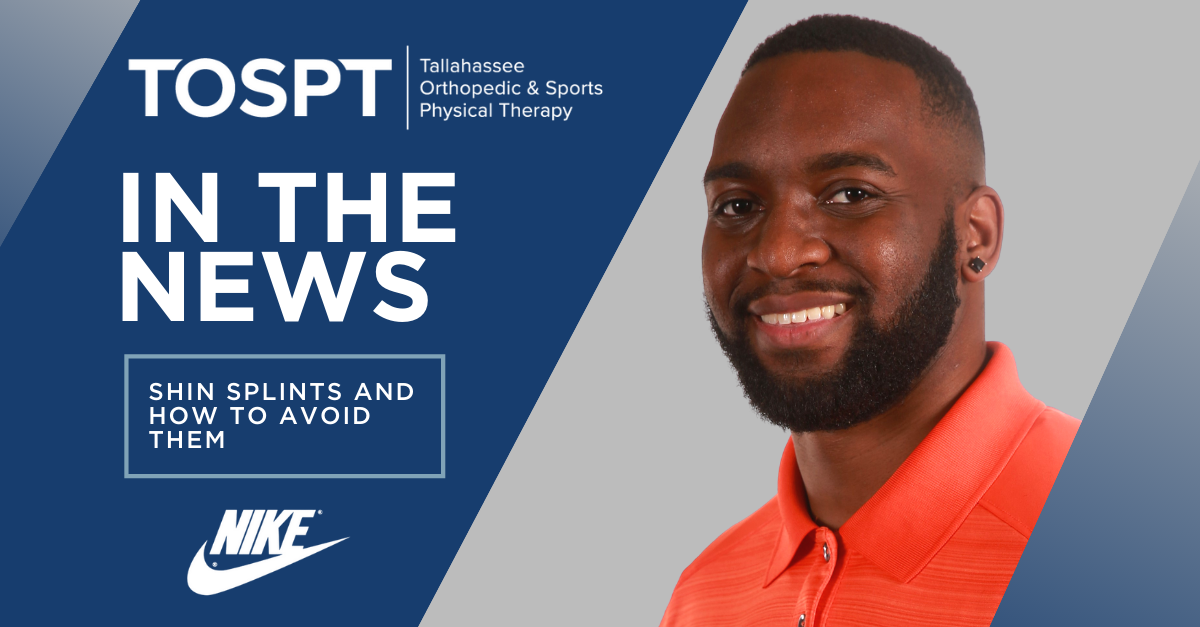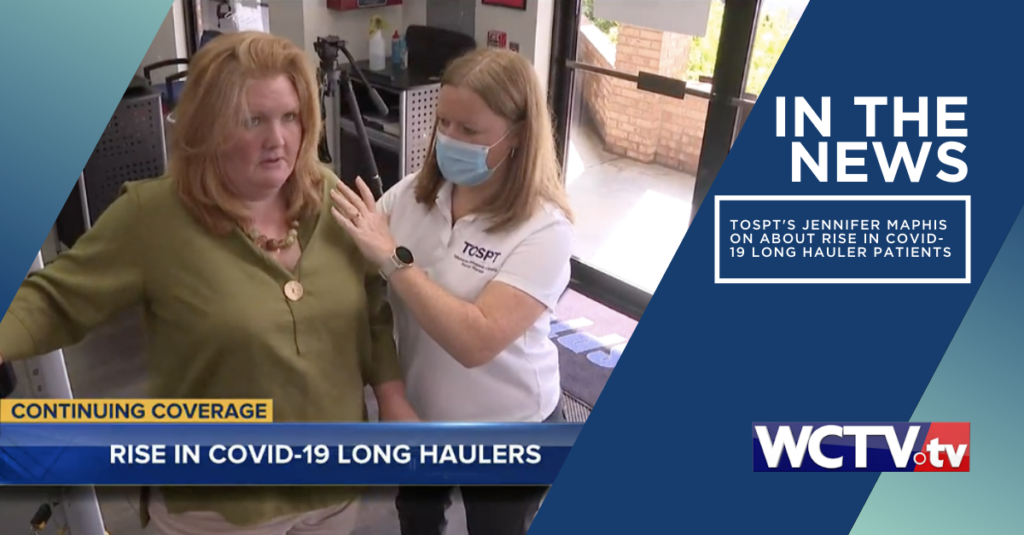Our very own Marcus Owens, PT, DPT, recently spoke with Nike about shin splints and how to avoid them, read on below!
***
Just as you’re ramping up your mileage on a run, you notice a dull ache or a sudden sharp pain along your shin bones. What just happened?
“Shin splints, also called medial tibial stress syndrome, is widely known to be caused by overuse, which is usually seen in athletes who run excessively,” says Marcus Owens, D.P.T. at Tallahassee Orthopedic & Sports Physical Therapy.
The good news is that shin splints aren’t considered a serious enough medical condition to require seeing a surgeon or getting an orthopedic boot. In some cases, especially if shin splints are addressed early on, they can heal when you take a break from high intensity exercise and ice them. Here’s how to dial back so you prevent injury.
What Causes Shin Splints?
The actual cause of shin splints isn’t fully known, says Owens, but there are two well-regarded theories by those in the sports medicine world. The first suggests that the repeated bending of the tibia — the larger of the two shin bones — through an activity like running creates trauma on the leg.
The other theorizes that when the muscles in your lower leg contract too much, it pulls on the tibial bone and causes stress — like tugging on a curtain can strain the curtain rod above it. Either way, there’s simply too much load, says Carol Mack, D.P.T., C.S.C.S., strength coach and doctor of physical therapy at CLE Sports PT & Performance. That’s why some tend to feel better once they stop running — the load immediately decreases, eliminating the source of stress.
Shin Splint Factors and Fixes
The primary factor for developing shin splints is overtraining, but that encompasses more than what you might think.
“When we talk about training, it’s important to note that this doesn’t just mean the amount that a person is running,” says Mack. “It’s also the intensity of their workouts, as well as the surfaces the person is running on. For example, easy runs versus sprints have very different intensities, and hills are very different from flat surfaces.”
These variables affect your body in different ways, including your shin bones and lower leg muscles like your calves. Some other factors that can go into overtraining and cause shin splints, as well as how to fix them, include:
- Running form: Overstriding can place more forces or stress through the shins, says Mack. This happens when you make contact with the ground too far in front of your center of gravity, with a leg that’s straight and stiff, reducing the ability to absorb the force of your landing. Overstriding can also cause issues in your knees and hips. You can correct this by shortening your stride slightly, being careful not to land on your heel, and making sure to stay upright in your torso instead of leaning forward.
- Training tolerability: Your overall training approach plays a role, says Mack. If your form is on point and you’re still struggling with shin splints (or other overuse injuries), take a look at your recovery game. Be sure to get the right nutrition, score ample sleep, and work on managing any emotional stress, while also prioritizing recovery time between workouts. All of these factors can go a long way toward prevention.
- Surfaces: Where you run matters, and for some runners, shin splints come up as soon as they start up a hill or head out on an uneven trail. For others, it might be the opposite, such as a trail runner who gets shin splints while running on the road or sidewalk because the hard surface increases the amount of force your bones have to absorb.That doesn’t mean you should stick to one surface, says Mack, because it’s helpful for your training to mix it up. But to stay safe, she suggests lowering the intensity on a new surface, such as doing an easy jog up a hill instead of a sprint, or doing a walk/run combo on a trail if you’re not used to that terrain.
- Weaker lower leg muscles: Repetitive stress on untrained muscles can cause shin splints, says Mack. Because of that, it helps to do lower-body strengthening moves such as lunges, squats and deadlifts.
“A well-known prevention strategy is to ramp up activity in progressions and to follow a training plan,” adds Owens. “This could mean running or practicing in intervals, with an increase in activity duration or intensity every week.”
Other measures such as kinesiology tape or bracing can help, he says, but these should be considered temporary — it’s better to fix the underlying cause of the issue by looking at your training specifics.
Bottom Line
In general, shin splints might be considered beneficial — they’re like a warning bell that you’re overdoing it on training, allowing you to adjust factors such as intensity and mileage in ways that support your body better.
But before you test out these strategies at home, check in with your doctor or physical therapist to ensure that you aren’t dealing with a stress fracture. Once you get the all clear on that, a physical therapist can take a look at your running stride and help you make the right adjustments so you can heal.
Read full article here: https://www.nike.com/a/what-causes-shin-splints




